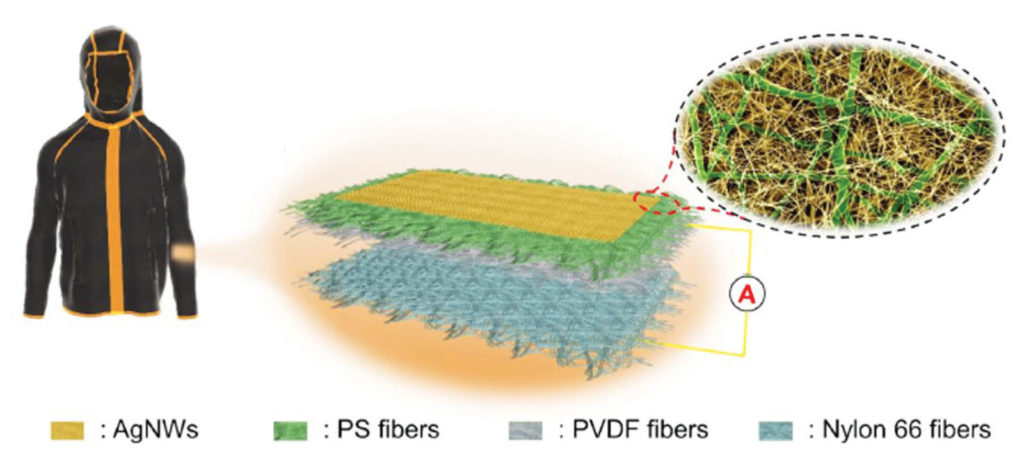
The newest member of the wearable tech movement may one day be a fabric that can generate a small electric charge, enough to power small electronics through everyday movements.
Researchers at the University of Fukui in Japan have created a mix of fibers that build a static electrical charge that can be “harvested” through the fabric. The two fibers (polyvinylidene fluoride and a type of nylon) are coated with silver nanowires. Rubbing the two materials together through mechanical motion, such as walking or running, causes them to gain a static charge called the triboelectric effect. Triboelectric nanogenerators (TENGs) use this effect to convert mechanical motion into electrical energy. When the materials are separated, the charge is released. An added polystyrene membrane collects and traps the charge.
Because the TENG components are composed of fiber material, they can easily be integrated with conventional fabrics, offering flexibility and breathability.
At this point in their development, TENGs can create only enough power to run devices such as LEDs and small calculators. In a feasibility demonstration of the nanogenerators, the researchers used the TENG-infused fabric to light up 126 commercial LEDs, each rated at 0.06 Watt. Further improvements, such as adding metals to the electrospun fibers, will improve the electrostatic potential and charge-trapping capabilities they say.
 TEXTILES.ORG
TEXTILES.ORG


